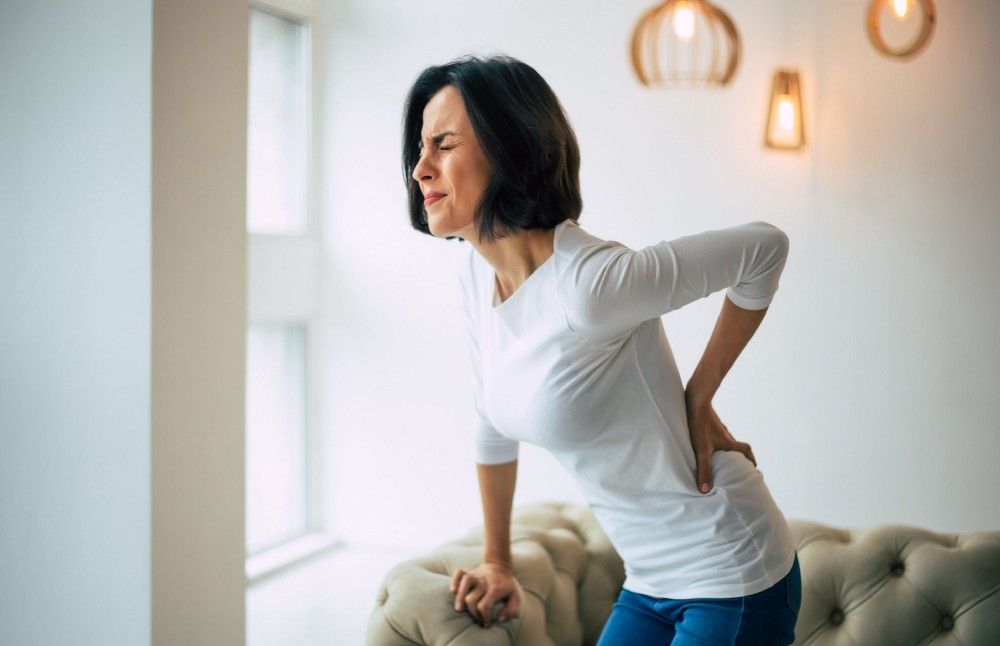
5 Best Yoga Poses To Help Calm Your Nervous System

Get ready to feel better. Yoga Poses To Help
Chronic stress, experiencing stressors over a prolonged period, can result in a long-term drain on the body. As the autonomic nervous system continues to trigger physical reactions, it causes a wear-and-tear on the body. It’s not so much what chronic stress does to the nervous system but what continuous activation of the nervous system does to other bodily systems that become problematic.
5 Best Yoga Poses To Help Calm Your Nervous System
1. Child Pose (Balasana)
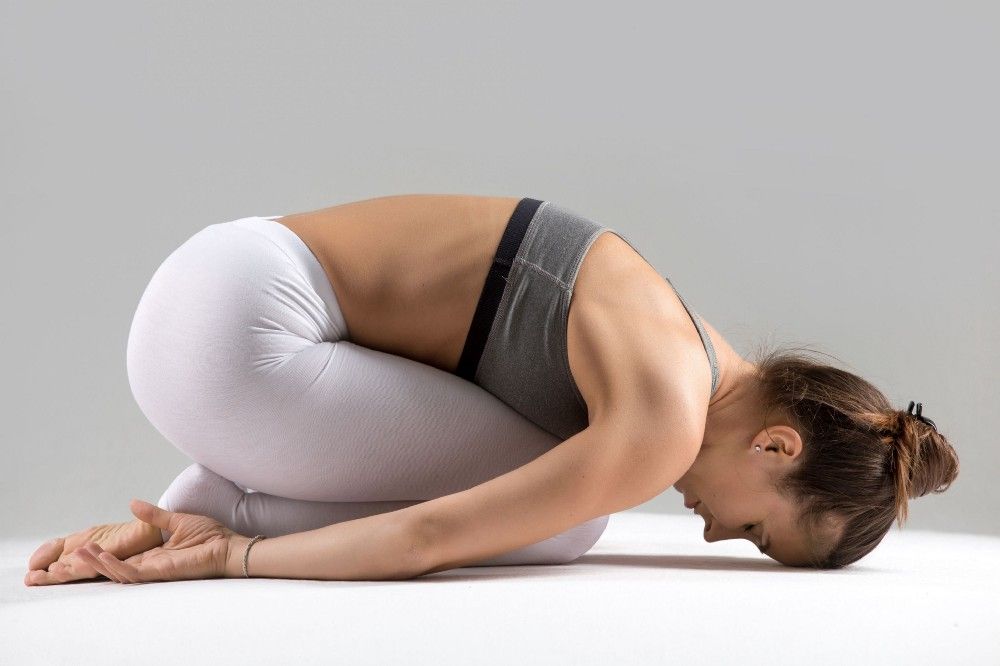
Photo credit: shutterstock.com/g/fizkes" target="_blank" rel="nofollow" class="link-text">fizkes shutterstock.com
Child’s pose helps to stimulate the nervous system, ease the process of digestion and re-energize the whole body. It also helps to reduce the symptoms of anxiety and provides comfort.
Performed as a resting posture, balasana allows you to pause and concentrate on your breath. It helps to release the tension from the back, shoulders, and neck.
How to practice child pose at home. A step-by-step guide.
- Kneel on the mat on the knees while keeping your back straight.
- Make sure that your knees are a hip distance apart.
- Lower your chest/ torso towards your thighs and bring your forehead close to the ground.
- Slide your hands back towards your knees and legs so your palms are face up.
- Hold this pose for about 20–30 seconds while concentrating on your breath.
- Rise and come back to the initial position.
2. Legs up the wall (Viparita Karani Asana)
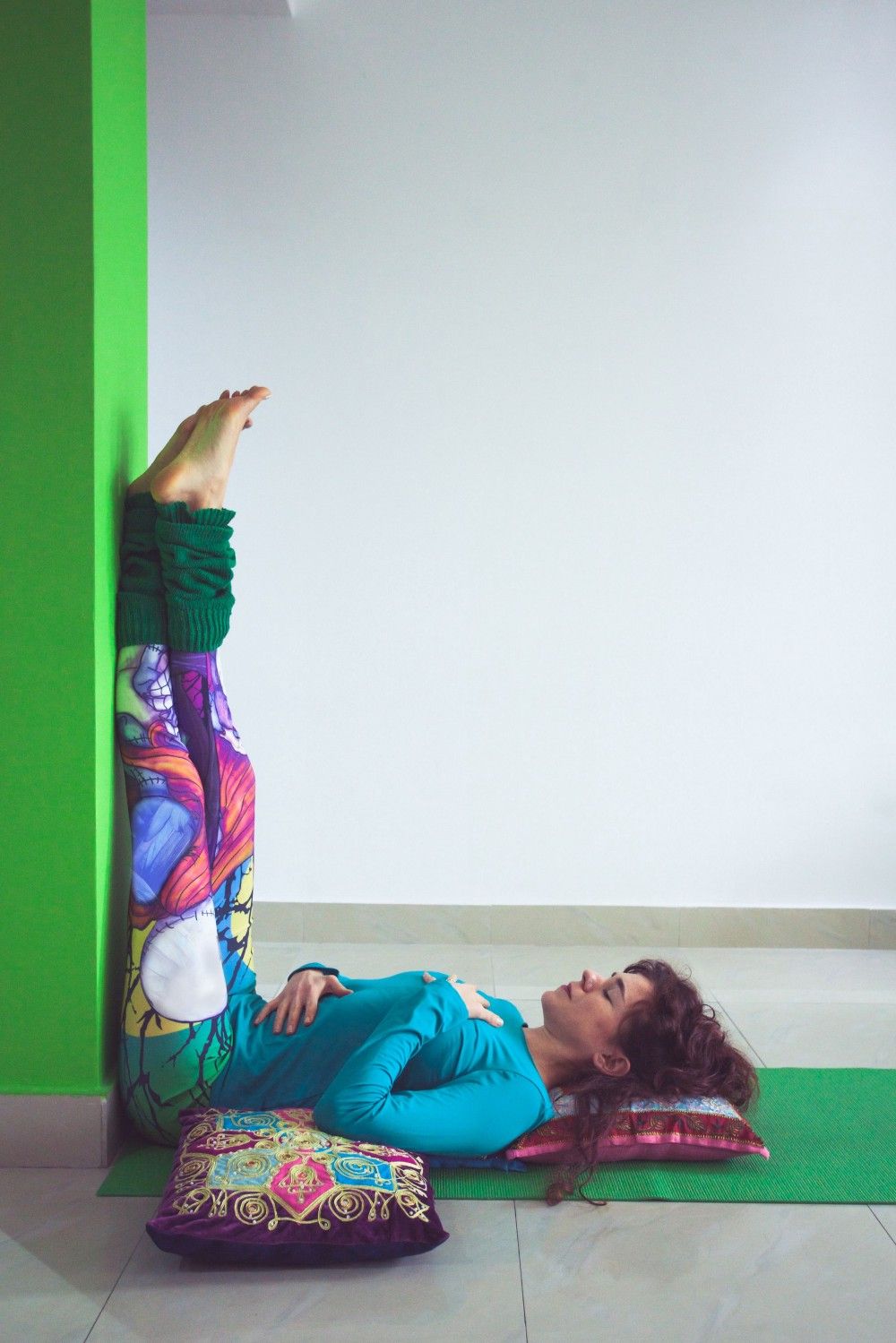
Photo credit: coka shutterstock.com
This pose is one of my favorites. The best posture to restore the body and mind connection. Viparita Karani asana is said to help stimulate neurons in our body. Not only does this pose immediately bring relief to the lower back, it effectively eases anxiety symptoms. And is good for the immune system.
The best place to perform this pose is in a quiet spot in your home where there are few distractions.
How to practice legs up the wall yoga pose at home. A step-by-step guide.
- Lie flat on your back close to a wall.
- Scoot your hips against the wall while bending your knees.
- Straighten your legs, and ensure your hips are flat against the wall.
- Hold this position for about 3 minutes while concentrating on your breath.
3. Bridge Pose (Setu Bandha Sarvangasana)
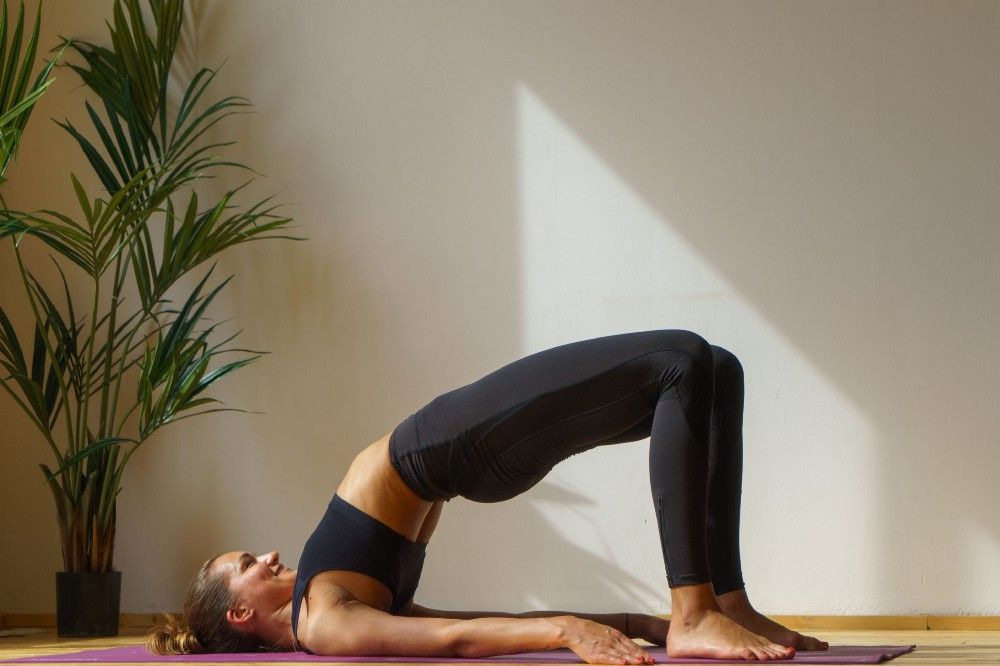
Photo credit: shutterstock.com/g/schum45" target="_blank" rel="nofollow" class="link-text">Sergey Chumakov shutterstock.com
The bridge pose, an inversion pose, is refreshing as well as energizing and helps to provide a stretch to your body. This posture helps improve blood circulation and stretches the spine, neck, chest, and hips while strengthening the hamstrings, back, and buttocks.
Setu bandha asana also helps to calm the brain and central nervous system, which elevates mild depression and anxiety. Not just this, the bridge pose also helps to stimulate abdominal organs, lungs, and thyroid glands while improving digestion.
How to practice bridge pose at home. A step-by-step guide.
- Lie flat on your back and fold your knees.
- Make sure your feet are placed hip-width apart and close to the hips.
- Place your hands on the floor, parallel to your body and facing downwards.
- Lift your body to the floor by lifting your pelvis by pushing your feet and lower back.
- Try to touch your chin to the chest without moving your head.
- Tighten up your hips and ensure that your thighs are parallel to each other.
- Take your torso as high as you can and hold this position for 30–50 seconds.
- Slowly release and get down to the initial position.
4. The Tree Pose (Vrikshasana)
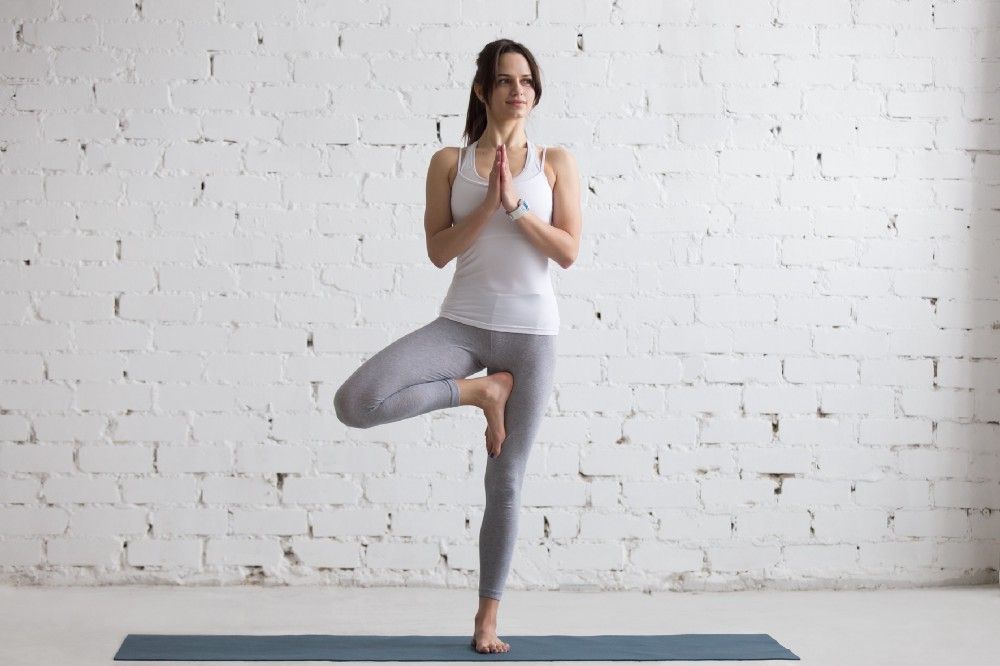
Photo credit: shutterstock.com/g/fizkes" target="_blank" rel="nofollow" class="link-text">fizkes shutterstock.com
A pose that helps to concentrate on one point is known as the ‘dristi point’; the tree pose is a balancing yoga posture that helps improve the stability of the legs. It helps to make your breath smooth, your mind calm, and your focus steady. In turn, it calms your nervous system.
Tree pose also helps to strengthen the tendon and ligaments of the feet while toning your legs and buttocks.
How to practice tree pose at home. A step-by-step guide.
- Stand straight with your back upright.
- Balance on your right leg and slowly lift your left leg.
- Bend your left leg at the knee and place the left leg against the right thigh.
- Place your foot flat on the thigh, so your toes point towards the ground.
- Join your hands in the prayer position in front of your chest.
- Lift your arms over your head while keeping your hands joint.
- Hold this position for a few seconds while taking deep breaths.
- Slowly lower your arms and bring your hands to your chest level.
- Place your left leg slowly on the ground. And repeat the asana with the opposite leg.
5. The Crocodile Pose (Makarasana)
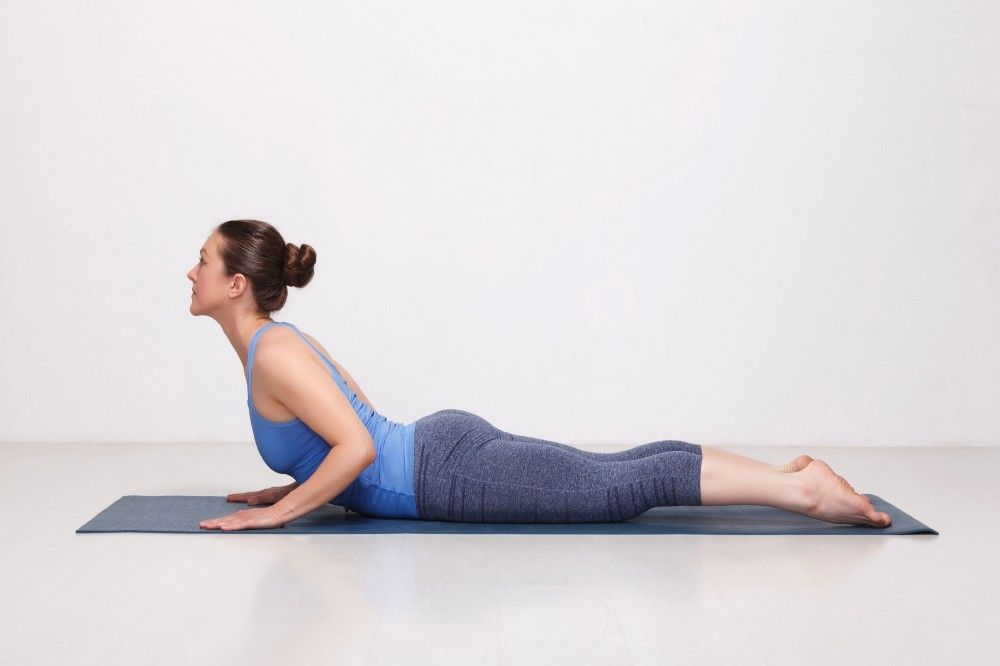
Photo credit: shutterstock.com/g/f9photos" target="_blank" rel="nofollow" class="link-text">Dmitry Rukhlenko shutterstock.com
A yoga posture that provides deep relaxation to the spine and shoulders, the Crocodile Pose facilitates diaphragmatic breathing, which is vital for a person’s overall well-being. This diaphragmatic breathing is also correlated with the functioning of the nervous system, which triggers the relaxation response. The crocodile pose is also said to cure conditions like knee pain, asthma, and lung-related issues. It stretches the hip muscles and completely relaxes the body, and keeps it rejuvenated.
- Lie flat on your stomach
- Fold your hands so your elbows touch the ground and your fingers face upwards.
- Raise your head and shoulders while keeping your neck straight.
- Bend your head forward and place your chin on the palms.
- Stretch out your legs so that your toes are facing outwards.
- Concentrate on your breath and let your muscles relax.
- Stay in this position for a couple of minutes and slowly release.
Final word
Fam, it’s time to take charge of your health and feel better. Include these asanas in your daily routine to strengthen and enhance your nervous system. Ensure you follow the instructions correctly to reap the maximum benefits from these yoga exercises and prevent any injury.
Follow Yoga with Adriene on Youtube. I love taking her different classes. ????
Disclaimer
Consult a doctor before starting an exercise regime.
I want to mention Susie Pinon, the editor of The Orange Journal and Anyone Can Write Online. I enjoyed reading her article ‘What Happens When You Do Yoga Everyday?’ ????